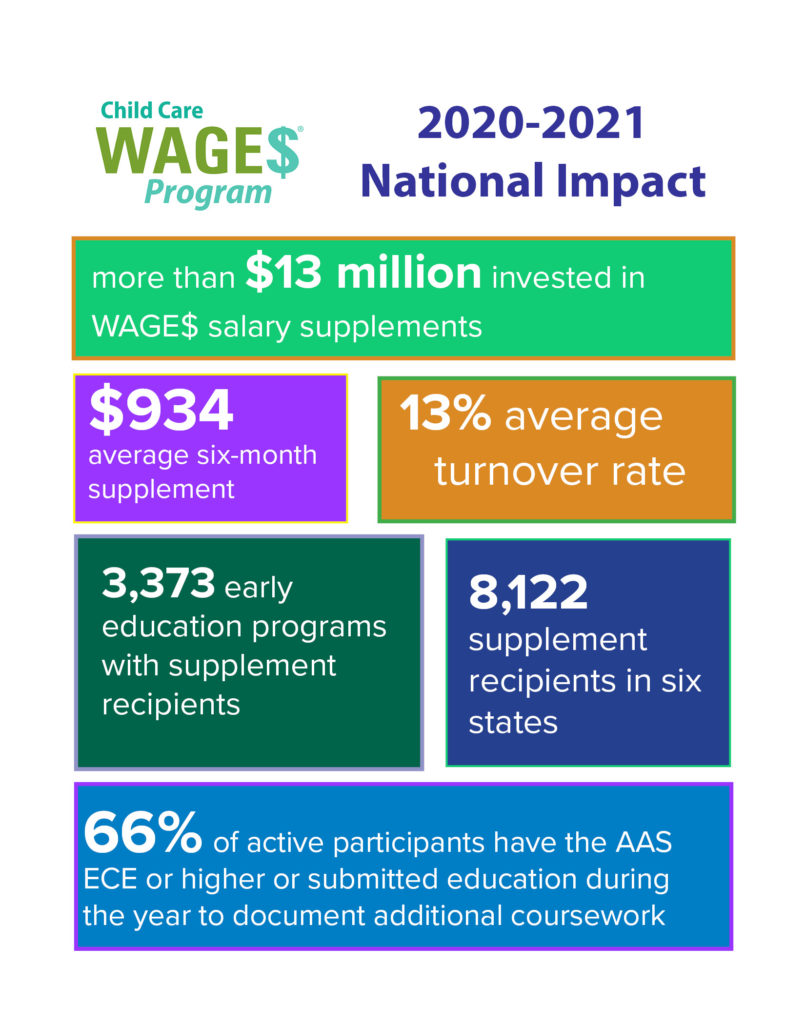“It is not surprising that turnover rates are so high in a sector where the work is hard but the pay is insufficient to cover even basic needs.”
— Bassok and Doromal, Brookings Institution
Writing for the Brookings Institution, Daphna Bassok and Justin Doromal recently asked how we can improve early childhood education? Daphna Bassok’s Early Childhood Initiative lecture, Reducing Teacher Turnover in Early Childhood Education Settings: Lessons from Research Policy Partnerships in Louisiana and Virginia, was held at Center for Child and Family Policy at Duke University last fall. Liz Bell at EducationNC wrote about this lecture. What was their answer? Use public dollars to pay teachers more.
We couldn’t agree more. Child Care Services Association (CCSA) has supported this for decades.
The combination of a lack of resources and efforts to maintain affordability for parents means many early childhood teachers are severely underpaid and leave the field for better-paying jobs, and others never consider the profession as an option. Our country is seeing this more and more as early care and education programs face meeting health and safety standards, decreased enrollment, turnover, hiring challenges and financial burdens due to COVID-19.
This pandemic is particularly challenging for the child care workforce because, for decades, child care has been one of the lowest-paid jobs across occupations. Beyond low pay, the child care workforce does not have the flexibility to work remotely (a benefit employers have significantly increased over the past 22 months). Child care is an on-site business.
One strategy to help stem the tide of turnover and increase teacher continuity to improve the quality of education in early childhood classrooms is CCSA’s Child Care WAGE$® Program (WAGE$), a nationally recognized compensation strategy for the early care and education workforce.
In response to research-based evidence that the quality of care children receive is lowered by high turnover rates and inadequate teacher education, WAGE$ was created as a pilot and first checks were issued in 1994 with Smart Start funding. WAGE$ became a statewide opportunity in North Carolina in 1999 as a funding collaboration between participating Smart Start partnerships and the North Carolina Division of Child Development and Early Education.

WAGE$ provides education-based salary supplements or incentives to early childhood educators in North Carolina for six-month periods worked in the same child care program with the goals of increasing compensation, education and retention. Other states have licensed the model through CCSA’s National Center. In the past fiscal year, WAGE$ invested more than $13 million in salary supplements to early childhood educators across the country, providing an average six-month supplement of $934 to more than 8,000 recipients in five states.
The COVID-19 pandemic provides an opportunity to rethink the value of and support for the early care and education workforce. They are the workforce that builds our workforce of tomorrow. In CCSA’s 2019 North Carolina Child Care Workforce Study, early childhood professionals were asked what would keep them in the field, and 81% said better pay and more than half said better benefits.
North Carolina has long been a leader in the early childhood industry. We need strategies to retain and strengthen the current workforce and build a pipeline of qualified teachers. Early childhood education relies on the future of the early childhood education workforce, which supports all of our other workforces.
WAGE$ is just one strategy for a more stable early childhood education workforce; we are continuing to think about innovative ideas and pilots in this field. The fundamental challenge for child care is that operating budgets do not support wages high enough to recruit and retain staff (compared to other businesses in our communities).
Child care is a business and a public good critical to economic recovery. The pre-pandemic child care model was expensive for parents yet failed to pay livable wages to the child care workforce. To better address the child care worker compensation challenge in this pandemic economy, states are developing solutions with supplemental federal funds, but they are temporary.

We need a permanent solution to the child care workforce wage and benefit challenge that may incorporate increased compensation through supplemental means, such as the Child Care WAGE$® Program, in addition to better base salaries. Early education is critical to our economy and the young children whose successful growth and development rely on it. The compensation package should reflect the importance of the work.
We appreciate the research of Daphna Bassok and Justin Doromal. Their study reinforced the importance of our work every day.
We’ve said it before. We need a way forward – a post-pandemic strategy to better compensate the child care workforce. This period of temporary increases in child care funding offers states an opportunity to provide a bridge for longer-term solutions. It is time to build the bridge between the pandemic-related supplemental federal funds for child care and the post-pandemic child care landscape upon which parents and employers will depend. Economic recovery and growth depend on it.




